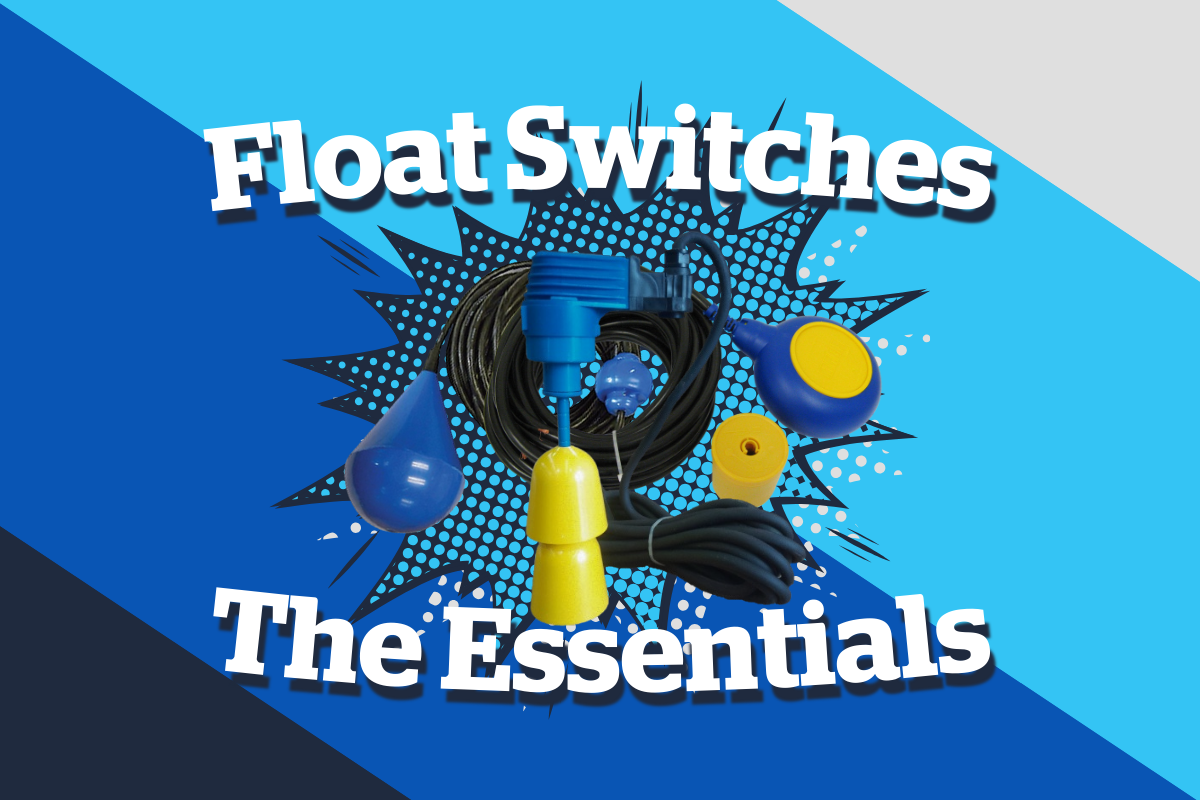Float Switches Explained: How They Work, Applications, and Choosing the Right One for Your Needs


In the world of fluid management, float switches play a pivotal role in automation and safety. These ingenious devices monitor liquid levels, ensuring optimal performance across various applications—from maintaining pool water levels to controlling wastewater systems. But how do float switches actually work, and what makes them essential for both residential and industrial use? This article delves into the mechanics of float switches, exploring their different types and functions. We’ll guide you through practical applications, whether you're a homeowner wanting to prevent overflow or a facility manager seeking an efficient level control solution. By the end, you’ll not only understand how float switches operate but also be equipped with the knowledge to choose the right one tailored to your specific needs. Join us on this journey to discover the seamless blend of simplicity and innovation that float switches offer!
Float switches are remarkable devices that operate based on a straightforward yet ingenious principle: buoyancy. At the heart of a float switch is a float—a buoyant object that rises and falls with the liquid level in a tank or container. This float is connected to a switch mechanism that can open or close an electrical circuit based on the position of the float. Essentially, when the liquid level reaches a predetermined point, the float triggers the switch, thereby initiating or halting a process, such as turning a pump on or off.
There are various designs for float switches, but the basic operation remains consistent. In a typical setup, the float contains a magnet that moves in proximity to a reed switch housed within a stem. As the float rises or falls with the liquid level, the magnet moves closer to or farther from the reed switch, causing it to open or close the circuit. This simplicity allows float switches to be reliable and durable, making them suitable for a wide range of applications.
Some float switches operate using a different mechanism, such as a mercury tilt switch or a conductive level switch. Mercury tilt switches rely on a small amount of mercury inside the float that shifts with the angle of the float, thus opening or closing the circuit. Conductive level switches, on the other hand, use the conductivity of the liquid to complete the circuit. When the liquid level rises to the height of the electrodes, it completes the circuit, thereby triggering the switch. Each type has its unique advantages and is selected based on the specific requirements of the application.
Float switches come in various designs to suit different liquids, tank sizes, and installation requirements.
One of the most common options is the cable float switch, where the float is suspended by a cable and tilts as the liquid level rises or falls. In our range, Acequip Cable Float Switches are available in 10 m and 20 m lengths, making them suitable for sump pumps, sewage systems, and stormwater pits. For potable water or wastewater in residential and light commercial applications, BlueSelect Cable Float Switches offer a durable polypropylene housing.
Vertical float switches operate in a vertical orientation, with the float moving up and down along a stem to open or close the switch. Acequip Vertical Float Switches are a compact solution for smaller tanks or pump pits where space is limited.
For more demanding environments, heavy-duty sewage float switches in our catalogue are designed with chemical-resistant materials and reinforced cables to handle aggressive liquids.
We also stock pump controller float kits that combine float switches with control panels, providing a complete, ready-to-install solution for level control.
Float switches are used in many industries to maintain safe and efficient liquid levels.
In residential settings, cable float switches such as the Acequip Cable Float Switch (10 m) are often installed in sump pumps to prevent flooding, or paired with rainwater tanks to automate pump operation. For potable water storage, the BlueSelect Cable Float Switch ensures reliable start/stop control without contaminating the supply.
In wastewater systems, including sewage pump stations and treatment plants, our heavy-duty sewage float switches withstand harsh liquids and heavy solids loading.
For industrial tanks and confined spaces, Acequip Vertical Float Switches provide accurate level detection where side-mounting or cable suspension isn’t practical.
In irrigation and rural water systems, cable float switches from Acequip or BlueSelect can be installed in reservoirs or header tanks to manage pump cycling and prevent overflow.
The use of float switches in fluid management offers numerous benefits, making them an essential component in both residential and industrial applications. One of the most significant advantages is their reliability. Float switches are designed to operate with minimal maintenance, providing consistent and accurate level control over long periods. This reliability is crucial in applications where continuous monitoring and control of liquid levels are necessary to prevent potential hazards or inefficiencies.
Another key benefit is the simplicity of their operation. Float switches do not require complex electronics or programming, making them easy to install and use. This simplicity also translates to cost savings, as the initial investment in float switches is relatively low compared to other level sensing technologies. Additionally, their straightforward design means that they are less prone to failure, reducing the need for frequent repairs or replacements.
Float switches also offer versatility in their applications. With various types available, they can be used to control liquid levels in a wide range of environments, from small residential tanks to large industrial reservoirs. This versatility ensures that there is a float switch suitable for almost any fluid management need. Moreover, float switches can be used in conjunction with other control systems, such as alarms or automated shut-off valves, to provide a comprehensive solution for fluid level management.
Environmental benefits are another important consideration. By providing accurate and reliable level control, float switches help prevent overflows and spills, reducing the risk of environmental contamination. In applications like wastewater treatment or chemical processing, this can be particularly critical, as it helps protect both the environment and public health. Overall, the benefits of using float switches in fluid management are manifold, underscoring their value in ensuring efficient, safe, and cost-effective operations.
Selecting the right float switch for your specific needs involves considering several important factors. The first consideration is the type of liquid being monitored. Different float switches are designed to handle various liquids, ranging from water to more aggressive chemicals. It is essential to choose a float switch made from materials compatible with the liquid to ensure longevity and reliable performance. For instance, float switches used in corrosive environments should be made from materials like stainless steel or certain plastics that can withstand harsh conditions.
Another critical factor is the operating environment. The temperature and pressure conditions where the float switch will be used can significantly impact its performance. Some float switches are designed to operate in high-temperature environments, while others may be better suited for lower temperatures. Similarly, the pressure within the tank or container can affect the float switch's operation, so it is crucial to select a switch rated for the specific pressure conditions of your application.
The installation configuration is also an important consideration. Depending on the tank or container's design, you may need a vertical or horizontal float switch. Space constraints and access points will influence the choice of float switch type. Additionally, the switch's mounting method, whether it is top-mounted, side-mounted, or cable-suspended, will depend on the specific application requirements and the ease of installation.
The electrical specifications of the float switch are another vital aspect to consider. The switch's voltage and current ratings must match the requirements of the control system it will be integrated with. It is also important to consider whether the switch needs to operate in normally open (NO) or normally closed (NC) mode, depending on the desired control logic. By carefully evaluating these factors, you can select a float switch that meets your specific needs and ensures reliable and efficient fluid level management.
Float switch technology has seen significant advancements over the years, enhancing their functionality and expanding their applications. One of the notable innovations is the development of smart float switches. These devices integrate advanced sensors and microprocessors, allowing for more precise control and monitoring of liquid levels. Smart float switches can communicate with other control systems, providing real-time data and enabling remote monitoring and automation. This integration enhances the overall efficiency and reliability of fluid management systems.
Another significant advancement is the use of wireless technology in float switches. Wireless float switches eliminate the need for complex wiring, making installation easier and more flexible. They can transmit data over long distances, making them ideal for applications in remote or hard-to-reach locations. Wireless technology also allows for easier integration with modern IoT (Internet of Things) systems, enabling seamless connectivity and data sharing across various devices and platforms.
Materials and construction techniques have also evolved, leading to more robust and durable float switches. Advances in material science have resulted in the development of float switches that can withstand extreme conditions, such as high temperatures, high pressures, and corrosive environments. Additionally, improved sealing techniques have enhanced the water and dust resistance of float switches, ensuring reliable operation even in harsh environments.
The miniaturization of components is another innovation that has expanded the applications of float switches. Smaller, more compact float switches can be used in applications where space is limited, such as in medical devices or small-scale industrial equipment. Despite their reduced size, these miniaturized float switches offer the same level of reliability and accuracy as their larger counterparts. These advancements in float switch technology continue to push the boundaries of what is possible, offering new opportunities for innovation and efficiency in fluid management.
Choosing the right float switch for your needs requires a thorough understanding of how these devices work, the different types available, and the specific requirements of your application. By considering factors such as the type of liquid, operating environment, installation configuration, and electrical specifications, you can select a float switch that ensures reliable and efficient fluid level management. The benefits of using float switches, including their reliability, simplicity, versatility, and environmental advantages, make them an invaluable tool in both residential and industrial settings.
Recent innovations in float switch technology, such as smart and wireless float switches, have further enhanced their functionality and expanded their applications. These advancements provide new opportunities for improving the efficiency and reliability of fluid management systems, ensuring that float switches remain a vital component in a wide range of industries.
As you embark on your journey to select the right float switch for your needs, remember that understanding the specific requirements of your application is key. Whether you are looking to prevent overflow in a residential water tank or manage fluid levels in a large industrial operation, there is a float switch designed to meet your needs. By leveraging the knowledge and insights provided in this article, you can make an informed decision and choose a float switch that delivers optimal performance and reliability for your fluid management needs.

Call us on (02) 4271 2220
email us here or complete the order form below